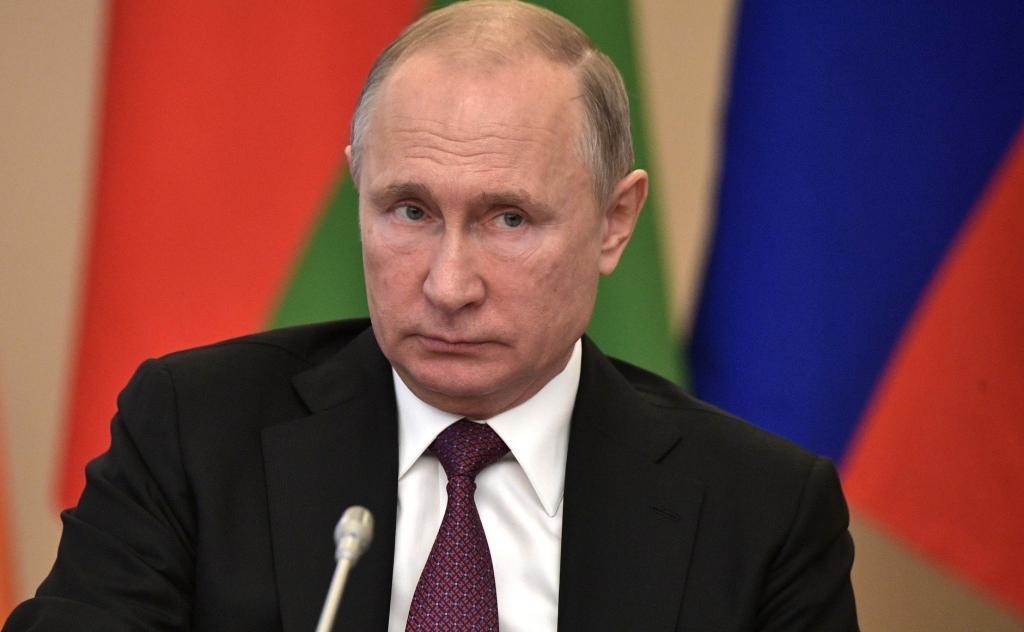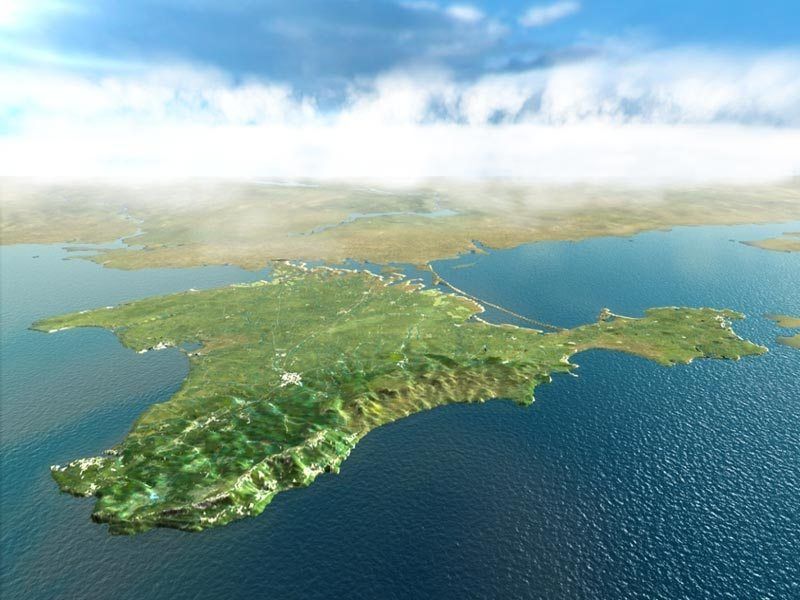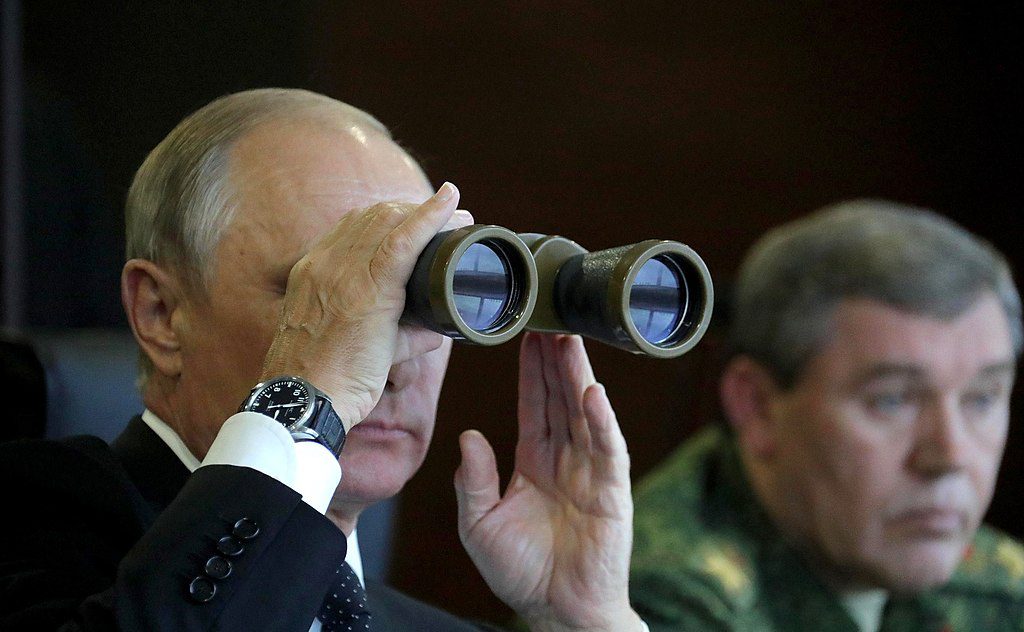The Russian president, Vladimir Putin, wants Estonia, Latvia and Lithuania to become Russian protectorates; and now that he has won the right to stay in power for decades, he is no longer constrained and will take dangerous risks to achieve that, Vladimir Yushkin, the head of Tallinn’s Baltic Centre for Russian Studies, says.
From the Kremlin leader’s perspective, the British protectorate over Eastern Europe has become the American protectorate; but the presence of ethnic Russian compatriots and Russian citizens means he “will insist that this protectorate be joint” and that Moscow has the right to engage in “humanitarian intervention”.
According to the Tallinn scholar, Putin’s strategy rests on the assumption that those around US president Donald Trump are not prepared to challenge Putin on this and that the US won’t, in the words of the former House Speaker, Newt Gingrich, has no interest in fighting a war in Putin’s backyard.
Given this is what Putin believes, whatever the facts are, he is going to try to achieve his goal and the possibility that Trump may not be reelected may mean he will take action sooner rather than later lest what he views as a window of opportunity begin to close, Yushkin concludes.
These conclusions flow from his analysis of Putin’s recent article on the runup to World War II, an article almost universally acknowledged to be not about the past but rather about the present and future and the ways in which the Kremlin leader views the world in general spatially and temporally and Eastern Europe and the Baltics in particular.

Putin thinks he’s in charge for the entire former USSR
At one level, Putin’s arguments were little more than a warmed-over version of Soviet propaganda from the last years of Stalin’s rule, Yushkin says; but at another more fundamental and disturbing one, they reflect his understanding of the nature of geopolitical space around Moscow.
For Putin, that space consists of three overlapping sets of coordinates: the borders of the USSR, the borders of the Russian world and the borders of the canonical territory of the Russian Orthodox Church of the Moscow Patriarchate, lines that have the effect of dividing Putin’s focus on what he conceives of as the divided ethnic Russian people.
Putin sees and the Russian constitution as amended defines the Russian Federation as the legal successor to the USSR. The Kremlin leader takes this to mean that it is in charge of the space that was recognised as legitimately Moscow’s by the Helsinki Final Act in 1975, even though the US took an exception about the status of the occupied Baltic countries.

Putin’s second coordinates are the borders of what he calls “the Russian world”. Since 2014, he has viewed himself as “the guarantor of the security” of that world and made this notion “the ideology of post-Soviet revenge” and of Russia once again being “the ingatherer of a world divided by artificial borders”. Since 2009, he has had the right to use force to do that.
And the third set of coordinates for Putin are the borders of the canonical territory of the Russian Orthodox Church. That includes 16 countries – Russia, Ukraine, Belarus, Moldova, Azerbaijan, Kazakhstan, China, Kyrgyzstan, Latvia, Lithuania, Mongolia, Tajikistan, Turkmenistan, Uzbekistan and Japan.
When one reads Putin’s article, one can see that he feels “comfortable in the past when borders were redrawn and continents divided up” by the great powers involved in a great game. He signalled that in particular by quoting Marshal Foche’s observation at Versaille that “this is not a peace: this is a 20-year amnesty”.
Putin feels he had a right to take something back
For Putin, “the victory in the cold war and the disintegration of the USSR also are not a peace but only an armistice”, Yushkin says. As a Chekist, Putin cannot view August 1991 “as the victory of the people of Russia over an occupying communist regime. He was part of this region. Thus, psychologically for him, the collapse of the USSR was a defeat.”
Moreover, “Russia also was humiliated” just like Germany and just like Hitler, Putin feels he had the complete right to take something back, in his case, Ukraine’s Crimea. But he isn’t limiting himself to that: he believes the non-Russian countries took Russian lands and haven’t given it back and Russia must have a voice in all of their actions as well.

At the same time, Putin knows perfectly well that “integration projects initiated by Russia on the post-Soviet space are met by the newly independent states with concealed or open expressions of fears about the loss of their sovereignty”, that most want to cooperate with others like China and that Moscow’s moves in South Ossetia, Abkhazia and Crimea frighten them.
“Putin also understands,” Yushkin says, “that the disintegration of the USSR is still not completed.” Unless its component states come together, the largest one will fall apart; but he has no attractive idea to bring them together. Consequently, he will use force or the threat of force to get his way.
For most of the region, this will involve threats to take parts of the territory of these countries unless they cooperate. For the three Baltic countries, it may involve that, but it will also involve, the Tallinn-based analyst says, demands and soon that the three accept becoming protectorates of the Kremlin.
This article is a lightly edited version of the article originally published by Paul Goble on his Window on Eurasia blog.
Cover: President Vladimir Putin and Russia’s Chief of the General Staff, Valery Gerasimov, at Luzhsky range, 18 September 2017. Photo by kremlin.ru.

